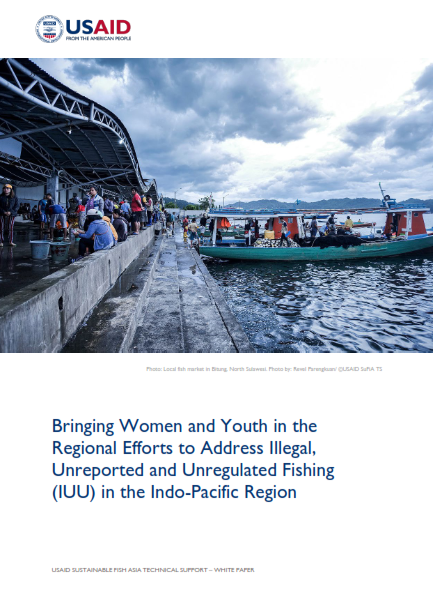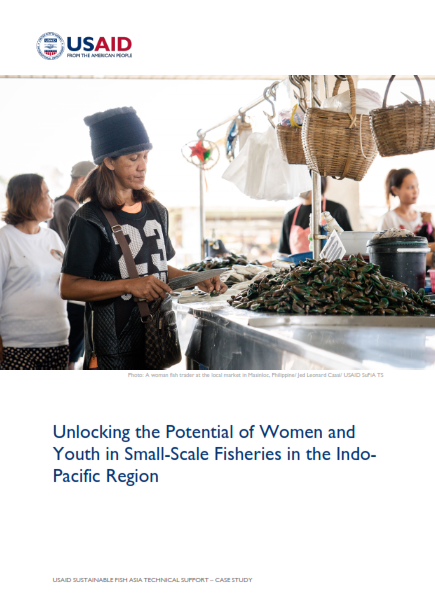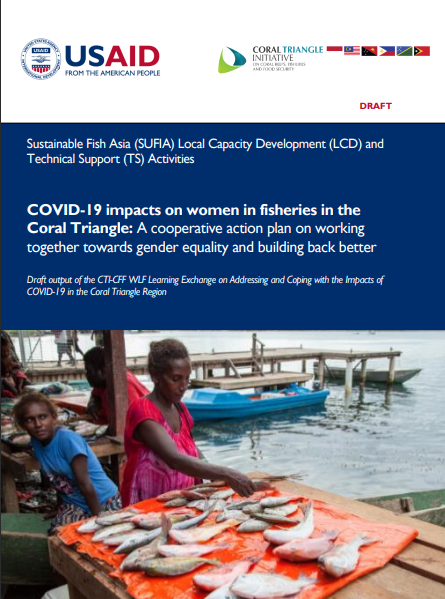Five Themes Spell Success for MPA Networks in the Coral Triangle -- report
A new report in the journal Coastal Management (external link) identifies five themes that characterize successful marine protected area (MPA) networks in the Coral Triangle.
Based on six case studies, one from each of the Coral Triangle countries, the report says these themes “provide important insights to guide future efforts to expand the CTMPAS (Coral Triangle Marine Protected Area System),” as well as having value for MPA practitioners in other regions.
The establishment of the CTMPAS is a key target identified under the CTI-CFF Regional Plan of Action for 2010-2020. The CTI-CFF MPA Working Group has set as an intermediate target the launching of the CTMPAS by the 5th CTI-CFF Ministerial Meeting in May. The goal is for the CTMPAS to become “a region-wide, comprehensive, ecologically representative and well-managed system of MPAs and MPA networks.”
The report looks at six MPA networks that exemplify different approaches that have been used in the Coral Triangle, framing each case study within a particular social, political and ecological context. These include two networks that evolved from the bottom up through careful coordination of existing small MPAs into strategically planned and scientifically informed MPA networks, namely, Verde Island Passage in the Philippines and The Lauru Ridges-to-Reefs Protected Area Network in Solomon Islands; three networks that were formed through the declaration of a large MPA and later refined to achieve their objectives through multiple use zoning, namely, Indonesia’s Nusa Penida, Malaysia’s Tun Mustapha Park and Timor-Leste’s Nino Konis Santana Park; and one network (Kimbe Bay, Papua New Guinea) designed at the outset to form an ecologically connected network.
While stressing that the MPA networks are still evolving and that it is premature to evaluate them based on specific measures of ecological or social objectives, the authors say these networks “demonstrate the promise of a region-wide CTMPAS, the sum of which will sustain marine and coastal ecosystems, and the populations that depend upon them, by improving the scientific basis and quality of management.”
The report describes the five success themes as follows:
- 1) The need for multi-stakeholder and cross-level management institutions – Where management jurisdictions are small, as in the Coral Triangle, local-scale management alone is unlikely to lead to effective management of ecological processes, which typically operate across broader spatial scales. Scale mismatches can be overcome by engaging in management at multiple scales and levels through cross-level governance (e.g., local, provincial, and national) and social learning
- 2) Integrating scientific information with local knowledge and traditions -- MPA networks designed on the basis of both scientific information and local knowledge are likely to have better management outcomes, as a result of more effective design and increased stakeholder support, which typically translates to compliance with management regulations. Also apparent in the case studies is a need for local considerations to take precedent in some context.
- 3) Building capacity for local responsibility and leadership -- In all case studies, NGOs played a critical role in MPA network design and implementation, and local managers are typically dependent on assisting organizations for technical support to design MPA networks with regional-scale and science-based perspectives. Dependence on outside organizations can be reduced through capacity building designed to foster local leadership and responsibility for management. MPA network design should involve local stakeholders as far as possible, and organizations providing technical and operational assistance should carefully plan their “exit strategy” early on, so that local capacity and leadership is cultivated, and management does not fail once support is withdrawn.
- 4) Multiple-use zoning to balance alternative objectives -- MPA networks in the Coral Triangle are typically required to achieve multiple, sometimes competing objectives, and must represent the interests and priorities of a diverse range of stakeholders. Multiple-use zoning of a large MPA offers a more flexible approach to resource management compared to MPA networks that comprise no-take zones only.
- 5) Learning networks -- Perhaps the biggest challenge for growing the CTMPAS will be replicating the small-scale successes across the vast inshore marine area of the Coral Triangle. This task will be facilitated through widespread dissemination of lessons learned and best practices for MPA network design and implementation, in formats and venues that are accessible to MPA managers. The development of learning networks, apparent in the case studies, is therefore encouraging.
To view full report, click here (external link).
See also the following related articles in the same issue of Coastal Management (external link) (free access until April 30, 2014):
- Marine Protected Areas in the Coral Triangle: Progress, Issues, and Options (external link)
- Designing Marine Reserves for Fisheries Management, Biodiversity Conservation, and Climate Change Adaptation (external link)



